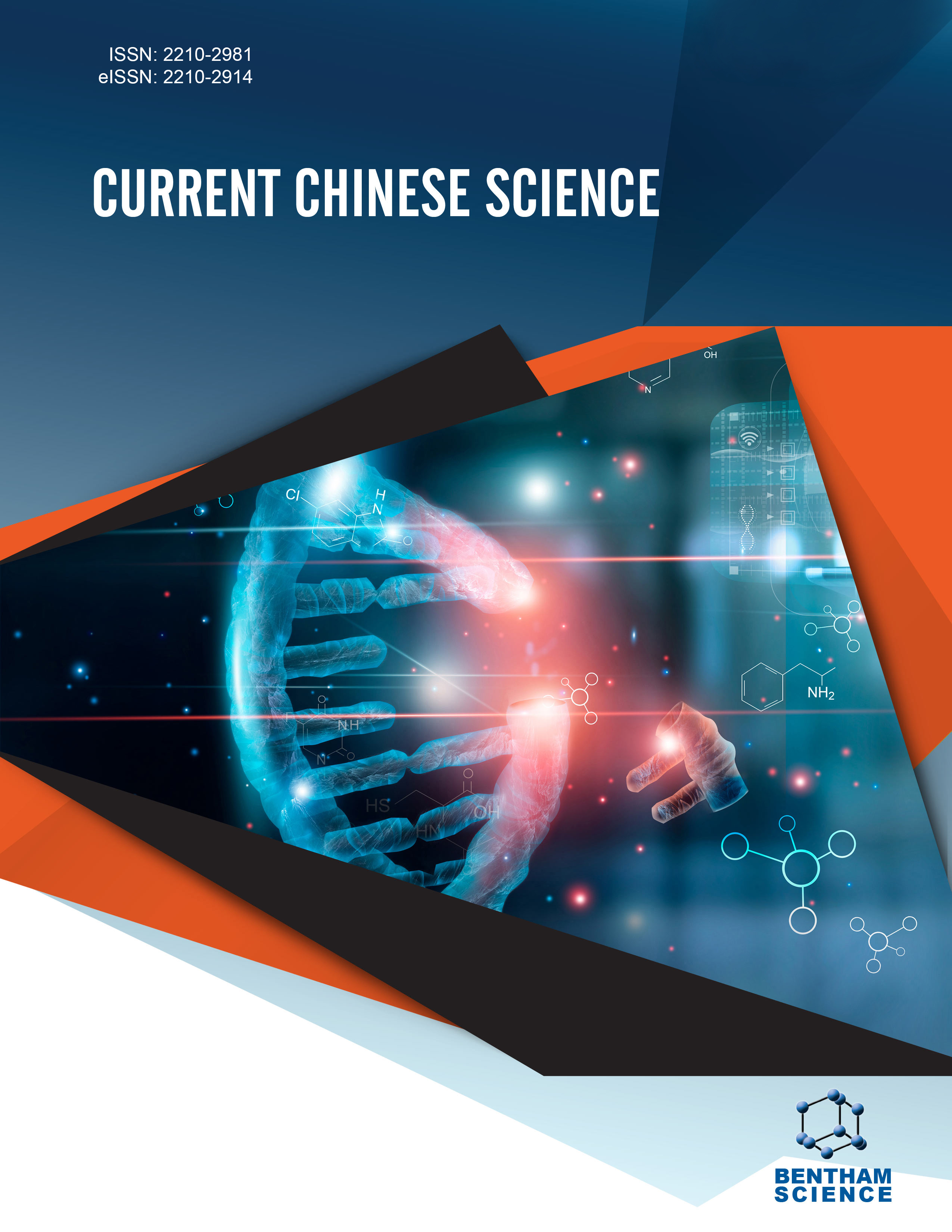- Home
- A-Z Publications
- Current Chinese Science
- Issue Home
Current Chinese Science - Current Issue
Volume 4, Issue 4, 2024
- Section: Artificial Intelligence and Robotics
-
-
-
Electromagnetic Slime Sentinels: Transforming Drug Delivery, Object Extraction, and Healing Innovations
More LessMagnetic small soft-bodied robots are perfect for targeted medication administration, micromanipulation, and minimally invasive surgery because they provide non-invasive access to confined locations. Presently available magnetically operated small soft robots are based on elastomers (silicone) and fluids, such as ferrofluid or liquid metal; however, they have certain drawbacks. Robots built on elastomer Read More
-
-
- Section: Biochemistry
-
-
-
Caffeine-modified Magnetic Activated Carbon as Novel Bio Adsorbent for Removal of the Diazinon Pesticide in Aqueous Media
More LessAuthors: Behjat Pouramiri and Vajihe NejadshafieeIntroductionIn this study, a novel composite was prepared using a combination of nanotechnology and biotechnology.MethodsThis composite involved loading Fe3O4 NPs and immobilizing caffeine on the surface of activated carbon (CAF-MAC NCs), which was prepared from palm kernel source material. The adsorbent properties were characterized using FTIR, TEM, VSM, and TGA techniques.ResultsThe adsorb Read More
-
-
- Section: Energy
-
-
-
Enhancing Photocatalytic Hydrogen Production Efficiency with Carbon Fibers: A Mini Review
More LessAuthors: Wenyan Zhang, Xiaoxia Lin, Hangmin Guan, Yihan Wang, Weidong Tao, Wenjie Tian and Lingyun HaoPhotocatalytic hydrogen evolution represents a promising route for sustainable and clean energy production. Integrating carbon fiber with various photocatalysts has shown significant enhancements in photocatalytic efficiency. This enhancement is primarily due to carbon fibers’ high conductivity, large surface area, and exceptional mechanical stability, which collectively promote electron transfer, charge se Read More
-
-
- Section: Medicinal Chemistry
-
-
-
In Silico Evaluation of Novel Quinoline Derivatives Targeting Hepatocyte Growth Factor Receptors as Anticancer Agents
More LessBackgroundNumerous methods for computer-aided drug design (CAAD) have made it possible to create and synthesize new chemical entities. The utilization of in silico techniques and structure-based drug design (SBDD) facilitate the visualization of the ligand-target binding process, in addition to allowing the prediction of receptor affinities and important binding pocket locations.ObjectiveThe current research work Read More
-
-
-
-
Quinoline Derivative Green Synthesis: Unveiling Anticancer Potential through Synergistic Insights and Molecular Docking Analysis
More LessAuthors: Parth Manvar, Amita Vyas, Dharmesh Katariya, Vijay Khedkar and Ranjan KhuntAimSynthesis and characterization of quinoline derivatives as an anticancer agent via green chemistry approach and their molecular docking.BackgroundIn comparison to classical synthesis, green chemistry is a powerful tool for the more affordable and ecologically benign synthesis of organic molecules, such as quinoline derivatives via an efficient base-mediated/metal-free approach.ObjectiveThe primary Read More
-
Most Read This Month Most Read RSS feed
Article
content/journals/ccs
Journal
10
5
false
en


